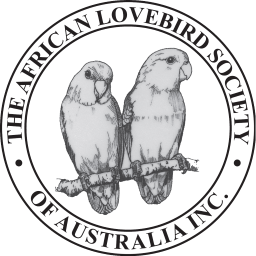The following Lovebird Species are regarded as rare in Aviculture worldwide .
Australia’s Quarantine and Live import bans dating back to 1949 have prevented a viable population with sufficient genetic diversity to establish these species here.
Some records point to the Abyssinian and Red headed Lovebird being present in Australia in the 1920’s & 1930’s, unfortunately they have long disappeared from our aviaries. The Madagascar lovebird was thought to have disappeared from Australian Aviaries in the late 1980’s,however a number of recent (2019) birds have been advertised for Sale , we believe they are currently extremely rare in Australian Aviculture.
- Madagascar Lovebird (Agapornis canus), is the only lovebird species that occurs outside of the mainland continent of Africa on the Island of Madagascar, mostly occurring in the coastal area on the southwestern corner. A relatively small bird of 140mm in length, they are sexually dimorphic, males distinguished by the White/Grey Head,Chest and neck, the balance of the bird is Green. The female is completely green. Both sexes have a horn coloured beak.
- Abyssinian Lovebird (Agapornis taranta ), is one of the largest Lovebird species at 170mm in length. They occur naturally in Central and Western Ethiopia and Southern Eritrea. They are usually found at higher elevations ,above 1600 metres. They are sexually dimorphic, both sexes are a light green with a Red beak, the male is distinguished by a red head patch from the back of the beak through to the back of the eye’s.
- Red Headed Lovebird (Agapornis pullarius), is the most widespread of the lovebird species occurring across much of equatorial Africa. It is a medium sized lovebird at 150mm in length and is sexually dimorphic. Both sexes are green, with the male having bright red on the forehead, cheeks and chest. The female is a similar green with a pale orange forehead, cheeks and chest. Both male and female having a red beak, the female’s beak is much lighter than the male’s.
- Agapornis swinderianus, occurs in heavily forested area’s of Cameroon, Central African republic, Congo, Guinea, Gabon, Ghana, Liberia and Uganda. It is not kept in aviculture having not been exported outside of Africa.
